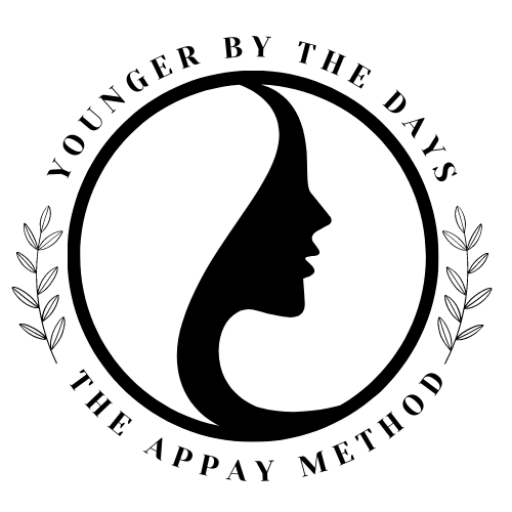Have you ever found it hard to catch your breath in a moment of high anxiety? It can be pretty frightening. You may think that breathing is the most easy and natural thing in the world. It’s something you’ve been doing your entire life, after all. But when you go through stressful times, your breathing pattern can change.
Here, we’ll look at how and why that happens and what you can do to reduce your anxiety and stress levels. And yes, the type of breathing you use can be the answer.
What happens when anxiety and stress levels rise?
Firstly, it’s important to note the difference between stress and anxiety, as the terms are sometimes used interchangeably. Anxiety is a persistent feeling of unease, nervousness, and irritability, usually around an uncertainty or event. Stress, on the other hand, is triggered by a factor or ‘stressor’ which creates feelings of tension.

Stress and anxiety are related but distinct. Stress often involves a short-term reaction to a specific event, a threat, or a challenge. Anxiety, on the other hand, is a longer-term emotion that can be brought on by numerous circumstances or situations. Anxiety can also arise from past experiences or memories of traumatic events. It is typically characterized by feelings of fear and uncertainty about what the future may hold. While both emotions can cause distress in individuals, they do differ in their underlying causes and effects.
As the ‘fight or flight’ stress response to scary situations, our physical reaction to feelings of anxiety includes surges of adrenaline and cortisol, raised heart rate and blood pressure, sweat, and changes to sleeping and breathing patterns. They both impact our bodies physically, affecting the nervous, endocrine, cardiovascular, and immune systems.
Can stress and anxiety cause breathing problems?
Oh yes, it most certainly can. Your breathing is inextricably linked to your nervous system. As anxiety builds, you tend to take short, shallow breaths from the chest. This thoracic type of breathing changes the oxygen and carbon dioxide levels within your body. You may feel dizzy, physically tense, and ironically, even more anxious and stressed.
Do breathing exercises help with anxiety?
Absolutely, yes they most certainly can. In fact, the American Institute of Stress recommends 20 to 30 minutes of deep breathing to lower stress and anxiety.
Breathing exercises, especially those that promote diaphragmatic or deep breathing, activate the parasympathetic nervous system, which helps to regulate or reduce your heart rate variability and blood pressure. Deep, controlled diaphragmatic breathing stimulates the vagus nerve, which can promote feelings of calm and relaxation, as well as aiding digestion. It encourages your body to slow down, find a balance, and initiate a relaxation response.
What breathing technique is best for anxiety?
There are various deep breathing exercises and forms of breathwork that you can practice to improve your physical and mental health. Each technique will help you to develop a healthier way of breathing, bringing many benefits and improving your well-being.
Everyone is different and will have their own preference for breathwork. But these are some of the most popular breathing techniques for anxiety and stress management.
Belly breathing
Also known as diaphragmatic breathing, belly breathing has very well-researched and documented benefits to your physical and mental health and well-being. The breathing exercise involves slowly inhaling through your nose and feeling the air move down from your ribcage to your abdomen. Notice your belly expand and contract whilst your chest remains pretty still. Then exhale slowly, using pursed lip breathing.
4-7-8 breathing
This is a wonderful relaxation technique. It’s an ideal pre-bed ritual to lower the anxiety and tension that may have built up over the day. You should find that you have a better night’s sleep.
Sit on a chair or on the side of your bed and inhale for four seconds. Then hold that breath for seven seconds. Finally, exhale for eight seconds. And repeat.
Box breathing
This follows the same technique as 4-7-8 breathing but adopts a slightly different rhythm. Instead of inhaling for four, holding for seven, and exhaling for eight, use a 4-4-4 model. That’s in for four, hold for four, out for four, hold for four.
These easy breathing exercises can be done anywhere – at your desk or on your commute for example.
Alternate nostril breathing
This simple breathing technique is an easy one to practice when you start to notice feelings of anxiety.
Sit back with your chest open and place your right-hand index and middle fingers between your eyebrows. Use your thumb of that hand to close your right nostril while you inhale slowly through your left nostril. Close your nose by pressing your right-hand ring finger on your left nostril. Leave it there while you hold your breath for a few seconds.
Remove your thumb to open your right nostril and exhale slowly. Wait a moment, then inhale through your right nostril. Repeat the process on the other side. Carry on with this alternate nostril breathing for around ten minutes or until you feel the relaxation benefits.
Lion’s breath
You may be familiar with this from a yoga class as it’s a form of Pranayama, a yogic breathing practice. It’s great for promoting slow breathing and calming your mind and body.
Place your hands on your legs or the floor with your fingers spread wide. Breathe in through your nose, open your mouth, and stick out your tongue towards your chin. Exhale deeply, from your abdomen while making a ‘ha’ sound. Take a short break and breathe normally, then go again.
Coherent breathing
This is a beautiful breathing exercise to induce a state of relaxation. Also known as resonance breathing, this breathing technique has proven positive outcomes, including mood-boosting, heart rate variability, and reduced blood pressure.
Lay down comfortably with your eyes closed. Inhale slowly through your nose and count to six. Exhale gently for six. Continue doing this gentle breathing technique for around ten minutes. While you’re lying there, be mindful of your body and how it’s feeling as you inhale and exhale.
How Beatrice Appay can help you
Beatrice Appay is a lifelong yoga, qigong, and breathwork practitioner and instructor. Mindfulness meditation practices also form part of her professional coaching offering. She’s a passionate advocate of breathwork techniques and it’s part of her everyday healthcare routine. She knows all too well how diaphragmatic breathing helps us in so many aspects of our health and well-being.
Join Beatrice’s breathwork classes in person or online (via Zoom or another video platform). You can choose one-to-one, in-person or online training, or a group session.
Contact Beatrice via email at youngerbythedays@gmail.com or social media messaging @beatriceappay on Instagram and Facebook.
To note: if you’re living with an ongoing social anxiety disorder or other severe mental health condition, we recommend you to seek medical advice from a health professional.


